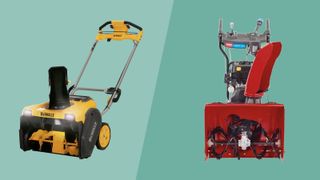Electronics
Latest about Electronics

Best cassette to MP3 converters: preserve audio memories
By Andy Hartup last updated
Buying Guide The best cassette to MP3 converters effectively preserve audio memories and offer a user-friendly experience for music enthusiasts.

Best DVD players: for your physical media collection
By Caroline Preece last updated
Buying Guide The best DVD players offer quality playback, compatibility with various formats, and the charm of physical media.

Best compact printers: space-saving devices for your desk
By Dan Mold last updated
Buying Guide Get more done with space-saving compact printers that offer plenty of features.

How to use a mini projector: your step-by-step guide for creating your own at-home theater
By Caroline Preece published
How To Mini projectors offer portable, cinema-sized viewing for home or outdoor use.

Single-stage vs two-stage snow blowers: which is better?
By Jonathan Knoder published
It really boils down to power

This robot cleaner climbed the windows for a streak-free finish at CES — I've never seen anything like it before, but I want to see it again
By Jennifer Oksien published
CES 2024 The ECOVACS' WINBOT W2 OMNI is a robot cleaner for the windows that I want to know more about.

Best cordless phones: keep the conversation flowing with these great cordless phones
By Rebecca Armstrong last updated
Buying Guide We've put together this handy rundown of the best cordless phones on the market right now to help you choose the right model for you and your home

Best electric train sets: fun for kids, beginners and aficionados
By Mike Harris last updated
Buying Guide Discover the top electric train sets for hobbyists, beginners, and enthusiasts with our expert's picks.
Sign up to receive the latest news, reviews, buying guides and deals direct to your inbox


